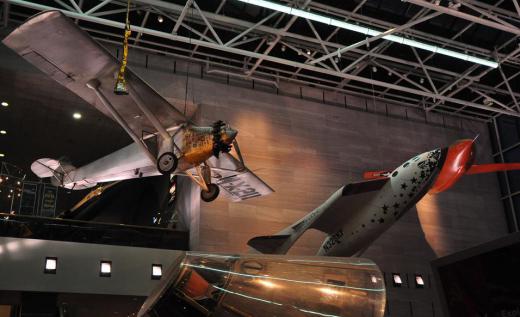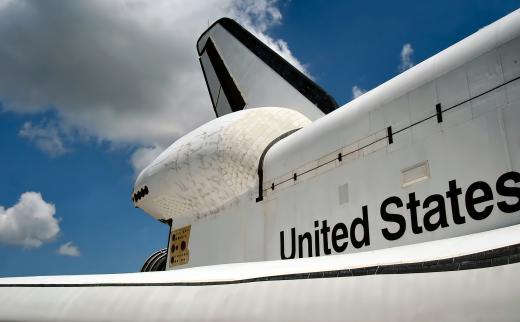What is a Space Plane?
 Mary McMahon
Mary McMahon
A space plane or spaceplane is an aircraft which blends the features of planes and rocket ships, allowing it to enter space and return safely. The idea behind the space plane is that it would eventually permit widespread space travel, allowing ordinary civilians to enter space along with government astronauts and researchers. A number of governments have worked on space planes, and several private companies have also joined the race to build a safe, efficient, workable space plane.
In 2004, SpaceShipOne, the first space plane to be built and successfully flown by a private company, won the Ansari X Prize, demonstrating that space planes were fully workable ideas, and that space travel was a growing and very real possibility. This space plane built on the work of numerous researchers, developing a spacecraft which was designed for commercial ventures.

Basically, a space plane is like a spacecraft with wings. Space planes use rocket power to enter orbit, and include much of the technology incorporated into aircraft. Some do not have enough power to enter orbit on their own, requiring a launch from a mother ship which carries them to high altitude before releasing them, while others can be launched from the ground.

A suborbital space plane is a space plane which is capable of briefly exiting the Earth's atmosphere before being forced to return. Orbital space planes can complete at least one full orbit of the Earth, with most companies investing in the development of orbital space planes, because they are more versatile and they have more potential applications. Eventually, the goal is to develop space planes which can travel well beyond the reach of Earth, allowing passengers and pilots to explore new frontiers.

Space planes are also designed to be reusable, allowing their owners to launch them again and again, just like regular aircraft. This makes them more profitable in the long term, in contrast with early spacecraft, which were built for specific missions and then scrapped. The ability to construct reusable planes allows commercial companies to enter the space race, encouraging the development of innovative technology which increases safety and efficiency.

Like other aircraft, space planes are regulated by the world's governments, although the precise nature of the regulation was still a topic of debate as of 2008. Like other new technologies and modes of transportation, the space plane represents a significant challenge to regulators concerned with safety, traffic control, and other issues.
AS FEATURED ON:
AS FEATURED ON:














Discuss this Article
Post your comments